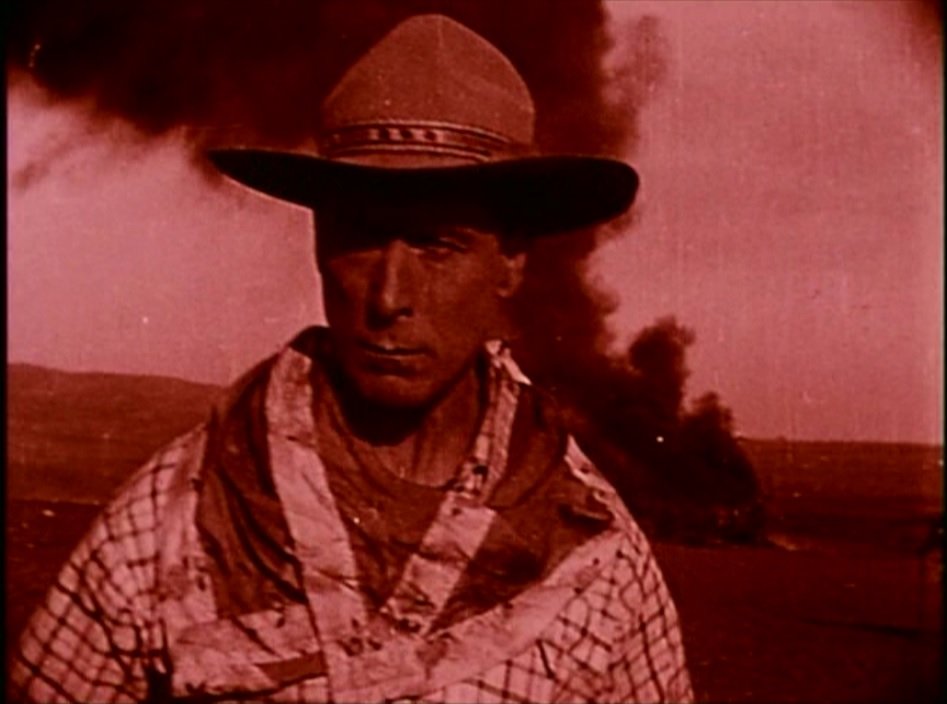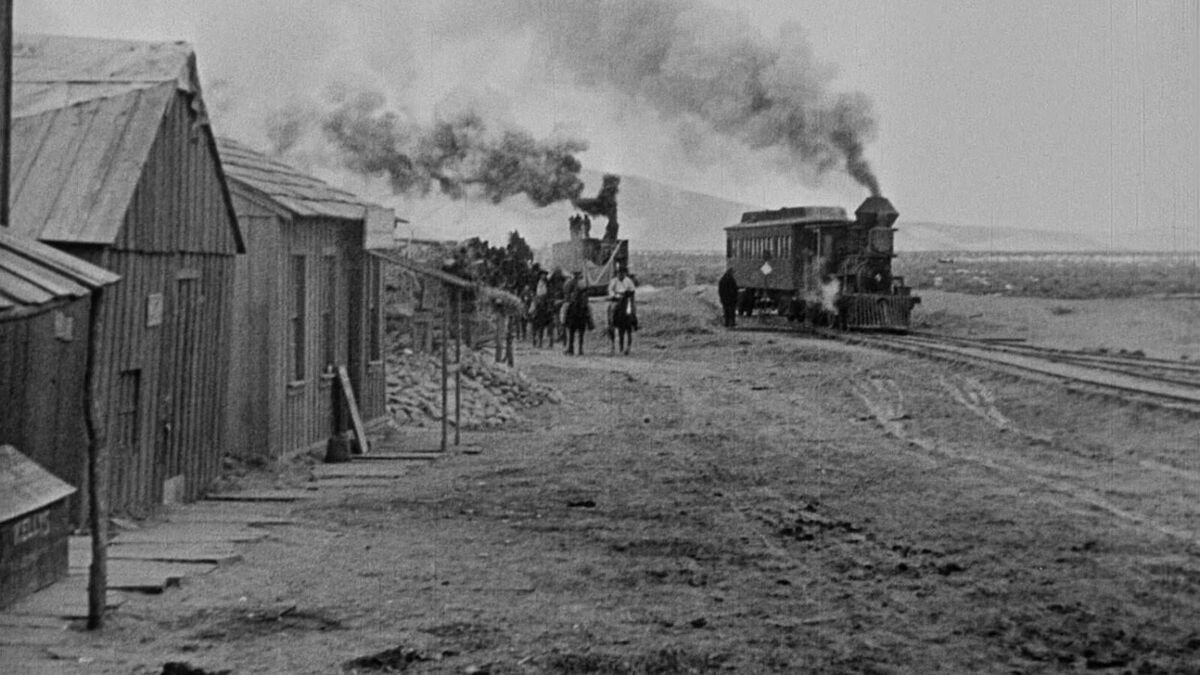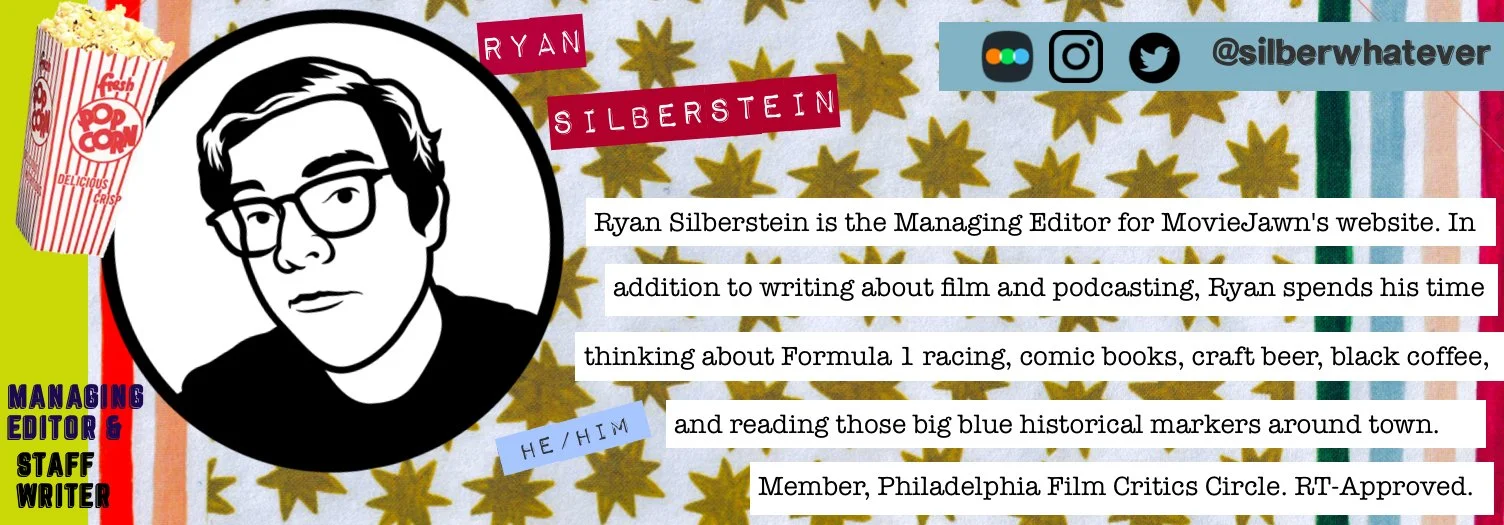Printing the Legend: Silent Starts
by Ryan Silberstein, Managing Editor, Red Herring
In the last few years, the western has come to make up more and more of my cinematic diet. One reason for this is my lifelong love of history, and another is my appreciation for the landscapes of the American West (this being a genre that reliably shoots on location means there’s almost always an interesting landscape we don’t have on the east coast). And for film analysis purposes, the consistency of the genre makes the themes particular to the time in which the film was made jump out a little more to me when compared to other genres.
The purpose of this yearlong project then, is to explore the genre in chronological fashion from the silent era to present, looking at 25-30 films in context within the genre and within film history. For the purposes of this column, while we will cover classical, spaghetti, and revisionist westerns, almost all of the films will be set in the American West between 1840 and 1920. There’s a lot of variety even with those guardrails, and we will see how the concept evolves over the last century of cinema.
I will be starting not quite at the beginning, but close to it. The western was part of the rise of dime novels and pulp magazines in the latter half of the 19th century and first decades of the 20th. The western was a popular genre for silent films, with 1903’s The Great Train Robbery cited as one of the earliest hits starring Broncho Billy Anderson. One thing that is fascinating from a historical perspective is that the U.S. Census Bureau only declared the frontier closed in 1890, so many of the genre’s earliest stars and creators were those with firsthand knowledge of the actual West.
The first film I will be looking at is 1916’s Hell’s Hinges, starring WIlliam S. Hart (he also co-directed the film, but was uncredited). Hart was born in 1864 in Newburgh, New York, while General Sherman was busy marching to Savannah. He was a stage actor, appearing in the original production of Ben-Hur in 1899. He moved into films in the early 1910s. Hart became friends with actual legendary lawmen Wyatt Earp and Bat Masterson, and probably relied on some of their experiences when developing the gritty and sensational style of westerns he favored.
Hell’s Hinges runs just over an hour, and is an enthralling watch. I’ve only seen a handful of silent features, and while I am developing that part of my brain, it’s hard to imagine a film less boring. Hart plays Blaze Tracy, a tough gunfighter with a clear moral center. Tracy comes in and out of the picture, as the main plot concerns itself with a parson, Robert Henley (Jack Standing) arriving in the exceptionally rough-and-tumble town of Hell’s Hinges, a place to “ride wide of,” per one of the intertitles. In this town, the good people amount to nothing more than “a drop of water in a barrel of rum.” Leading the debauchery is the local saloon owner–the wonderfully named Silk Miller (Alfred Hiollingsworth)–who won’t let religion risk his business, and sets out to intervene. First he tries to disrupt the minister’s evangelical activities directly, and then gets a dancing girl to take the good preacher to her bed in order to tarnish the reputation of both the man and his faith. A mob burns the church, and Tracy returns to burn down the town as retribution.
While it is more or less a morality play about how organized religion represents a way to control and ‘civilize’ barbarism–in this case a bunch of settlers enjoying lawlessness–I have to give it to Hell’s Hinges for being a pitch black morality play. Hart and the other filmmakers lean in to just how nasty and wild the west can be, and although Tracy sides with the side of good, he does so in the harshest of ways, presaging Clint Eastwood’s High Plains Drifter.
Jumping ahead a decade, I wanted to introduce John Ford. The more of Ford’s films that I watch, the more I like them, and I was tempted to make this a yearlong study of the man’s work. But we are going to enter his body of work with his 1924 epic, The Iron Horse. By the time he made this film in his 7th year as a director in Hollywood, Ford had made many silent films, several of them westerns. Sadly, only ten of Ford’s 60 silent films have been preserved. I wanted to include The Iron Horse because it has been described as Ford’s Jaws, the one where his personal sensibilities and the material came together to show the promise he had as a director.
I watched the American cut of this film, which runs two and a half hours. The film loosely follows the construction of the first transcontinental railroad from government mandate by Lincoln through the completion of the railroad in 1869. I have to admit that this was a tough watch. Having just started watching silent features, I am not sure I have the mental muscles developed enough to appreciate this in all its glory. The Iron Horse only has a couple of throughline characters, and much of it feels like tangents or sidebars to the actual construction of the railroad. Not that those diversions aren’t interesting on their own, but again, the sheer immensity of the film really wore out my attention span.
My love of John Ford was likely inevitable. History was always my favorite subject in school, especially American history, a subject Ford specialized in as well. Many of his films are westerns, but nearly all of them are historical dramas, bringing the emotion of past events to life through his characters. He excels at placing people and settings in the frame in such a way as to celebrate the individual while staging them against the breadth of a landscape. Rarely is there a close up in this film, as it sort of takes a ‘man versus nature’ mode for much of it, with the dream of connecting the country by rail only being challenged by the landscape itself and a greedy businessman.
Other than the impressive compositions and clear storytelling, the thing I appreciated most about The Iron Horse was its humanity. While the depiction of the Chinese workers may not be the most ideal, and there likely should have been some more Black characters included, Ford’s refusal to whitewash history is telling. Ford may be a conservative, but he certainly wouldn’t be a Republican today. Aside from Abraham Lincoln and the railroad dreamers, the most important characters in the picture are the community of laborers that physically brought the dream to bear. D.W. Griffith and his racism remains unnecessary in the history of American film.
However, there is no way to discuss westerns without acknowledging their settler perspective. John Ford’s relationship with Native Americans often depicts them as a people apart, representing the wild country even if they are not depicted in barbaric ways. While I am not an expert in any aspect of Native culture, I will do my best to be cognizant of those depictions as I write about these films.
Next time: We jump ahead to the end of the 1930s, with Destry Rides Again and Stagecoach!






